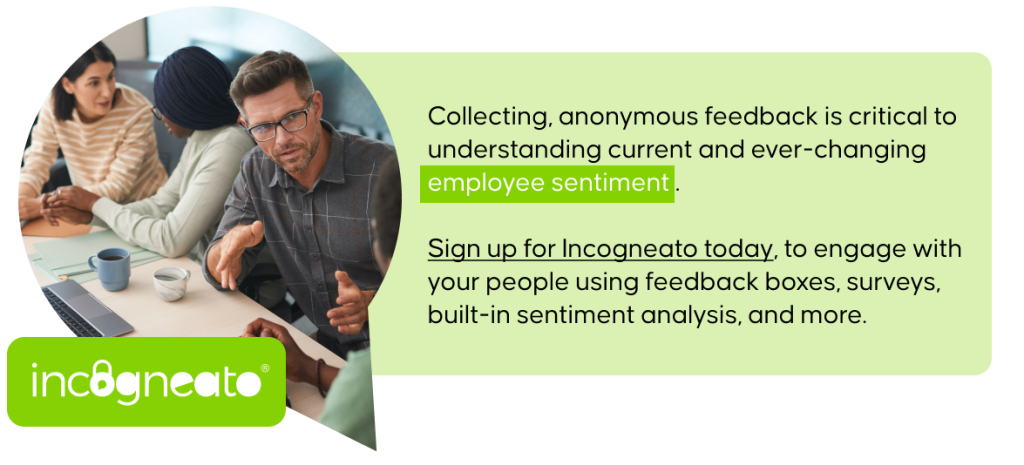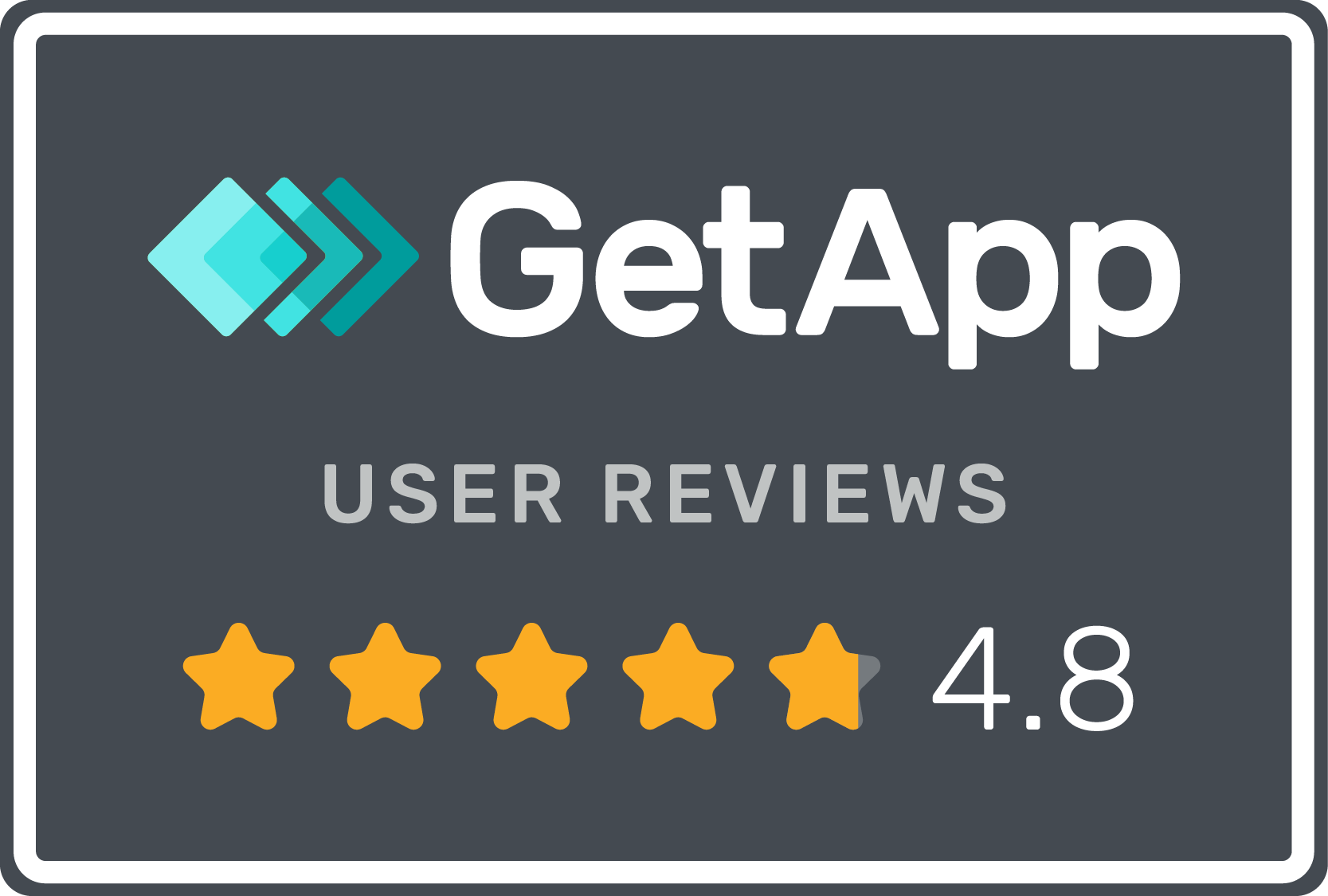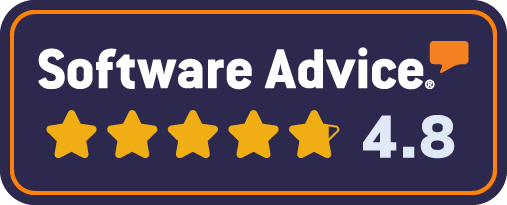10 Best Employee Feedback Tools in 2025
Posted November 21st, 2024
In today’s competitive business landscape, employee feedback has become a cornerstone of successful organizations. As companies seek to boost productivity, improve morale, and retain top talent, understanding the needs and concerns of their workforce is more important than ever. However, gathering actionable insights from employees can be a complex task, requiring the right tools to streamline the process. Employee feedback tools provide a structured way to collect, analyze, and act on input, ensuring that employees feel valued and organizations make data-driven decisions to enhance workplace culture and performance.

With numerous platforms available, choosing the best employee feedback tool for your organization can be a daunting task. Whether you’re looking for an anonymous survey tool, a continuous feedback platform, or a comprehensive employee engagement solution, the right tool can help create a more responsive and dynamic work environment. In this article, we’ll explore the 10 best employee feedback tools on the market, evaluating their features, strengths, and suitability for different types of organizations, so you can find the perfect solution to meet your company’s needs.
1. Incogneato

Incogneato has gained attention for its unique focus on anonymous feedback and employee well-being. Unlike some of the larger platforms, Incogneato specializes in creating a safe, anonymous environment for employees to voice their thoughts without fear of repercussion. This anonymity can encourage more honest, candid feedback, especially on sensitive issues related to company culture, management, and workplace conditions.
Incogneato shines in areas where anonymity and trust are paramount. The platform offers a combination of pulse surveys, anonymous feedback, and sentiment analysis, making it a great fit for organizations that prioritize transparency and psychological safety but may not need the extensive, multi-layered offerings of larger platforms.
Advantages:
- Anonymity First: Incogneato ensures complete anonymity for employees, allowing them to provide honest, candid feedback without fear of reprisal.
- Real-Time Feedback: Incogneato offers continuous, real-time feedback collection, helping organizations quickly address issues as they arise.
- Customizable Surveys: Incogneato allows organizations to create tailored surveys that address specific areas of interest, such as company culture or leadership effectiveness.
- Builds Trust and Transparency: By giving employees a safe space to voice their opinions anonymously, Incogneato fosters trust and transparency within the organization.
- Scalable for Different Teams: Whether for small teams or larger organizations, Incogneato is scalable and adaptable to different company sizes and needs.
- Clear Pricing: Incogneato does not charge per seat and all plans include unlimited feedback.
Cost: Starts at $19/month for unlimited feedback and teams
2. Officevibe
Officevibe is a popular tool that focuses on employee engagement and continuous feedback. It allows managers to send pulse surveys, conduct one-on-one meetings, and gather feedback on a variety of workplace topics. Its simple, user-friendly interface makes it easy to track employee sentiment over time and make data-driven improvements. The platform also features reports that provide actionable insights to help leadership make informed decisions.
Advantages:
- Anonymity and Trust: Officevibe encourages honest feedback by ensuring employee anonymity, fostering trust in the feedback process.
- Real-Time Pulse Surveys: Regular pulse surveys provide continuous feedback, helping track employee sentiment and identify issues early.
- Actionable Insights and Reporting: Detailed analytics and reports allow managers to make data-driven decisions and improve employee engagement.
- Integration and Ease of Use: Seamless integrations with tools like Slack and Microsoft Teams, along with a user-friendly interface, streamline feedback collection.
- Focus on Employee Well-Being: Features like peer recognition, 1:1 meeting templates, and well-being surveys help support employee growth and mental health.
Cost: Pro Plan is $5/employee/month ($250/month for a team of 50)
3. Culture Amp
Culture Amp is an employee feedback and engagement platform that helps organizations measure and improve their workplace culture. It offers tools for employee surveys, performance reviews, and pulse surveys, allowing companies to track both overall engagement and specific aspects of their employee experience. Its advanced analytics features make it easy to pinpoint trends and take action quickly.
Advantages:
- Comprehensive Employee Engagement: Culture Amp offers robust tools for measuring employee engagement, satisfaction, and organizational culture through customizable surveys and pulse checks.
- Actionable Insights and Analytics: The platform provides powerful analytics and benchmarks, allowing organizations to track trends, identify areas for improvement, and take data-driven action.
- 360-Degree Feedback: Culture Amp facilitates 360-degree feedback, enabling managers to gain a well-rounded view of employee performance and development.
- Employee Development Tools: The platform supports employee growth with features like performance reviews, goal setting, and development tracking.
- Scalable and Customizable: Culture Amp is highly customizable and scalable, making it suitable for businesses of all sizes, from startups to large enterprises.
Cost: Starts at $250/month
4. Vetter
Vetter is an online suggestion box platform designed to help organizations gather and implement employee ideas efficiently. Its user-friendly interface encourages staff participation by simplifying the submission, rating, and feedback processes. Vetter’s flexibility makes it suitable for various industries, aiming to enhance employee engagement and drive continuous improvement within companies.
Advantages:
- User-Friendly Submission Process: Employees can easily submit ideas through a straightforward interface, accessible via computer or mobile apps, encouraging widespread participation.
- Customizable Anonymity Options: Organizations can choose from various anonymity settings—fully anonymous, non-anonymous, or allowing the submitter to decide—fostering an environment of open and honest feedback.
- Idea Rating and Feedback Mechanisms: Colleagues can rate and comment on submitted ideas, promoting collaborative discussions and refinement of suggestions.
- Targeted Challenges: Administrators can create specific challenges to focus on particular areas of improvement, motivating employees to contribute relevant ideas within set timeframes.
- Comprehensive Reporting and Analytics: Vetter provides tools to track idea submissions, comments, and implementations, with data exportable to CSV or PDF formats, aiding in informed decision-making and program evaluation.
Cost: Not readily available. Quote-based pricing only.
5. 15Five
15Five is an employee feedback platform that combines performance management with employee engagement tools. It includes weekly check-ins, pulse surveys, goal tracking, and one-on-one templates, making it easy for managers to engage with employees and track progress. The tool also features performance reviews and a continuous feedback system to help organizations support employee growth and development.
Advantages:
- Holistic Performance Management: 15Five combines continuous feedback with performance reviews, goal tracking, and 1:1 meeting tools to support employee growth and development.
- Weekly Check-Ins: The platform’s weekly check-ins allow employees to share updates, feedback, and challenges regularly, helping managers stay connected and address issues in real-time.
- Goal Setting and Tracking: 15Five enables clear, measurable goal setting and tracking, ensuring employees align with company objectives and can easily track their progress.
- 360-Degree Feedback: The tool facilitates 360-degree feedback, giving employees a well-rounded perspective on their performance and helping foster development conversations.
- Employee Recognition: 15Five includes built-in recognition features, allowing peers and managers to acknowledge achievements—boosting morale and engagement.
Cost: Starts at $4/employee/month ($200/month for a team of 50)
6. SuggestionOx
SuggestionOx is a platform designed to help businesses and organizations collect and manage feedback from their employees, customers, or users. It allows people to submit suggestions, ideas, and comments, which can then be voted on and prioritized by others. This crowdsourced approach fosters collaboration and helps companies make data-driven decisions based on community input. The tool is often used for improving products, services, or internal processes.
Advantages:
- Customizable Feedback Channels: SuggestionOx allows businesses to tailor feedback forms and collection methods to suit their specific needs, ensuring a personalized experience for users and customers.
- Advanced Voting System: The platform includes a robust voting system where suggestions can be upvoted or downvoted, helping to surface the most valuable or popular ideas based on community engagement.
- Real-Time Analytics: SuggestionOx offers real-time tracking and analytics, allowing businesses to quickly analyze feedback trends and make informed decisions faster than traditional methods.
- Integrated Collaboration Features: It supports collaborative features that enable team members or community members to discuss, refine, and work together on ideas, making it more than just a feedback tool but a platform for innovation.
- Transparency and Reporting: SuggestionOx emphasizes transparency by allowing users to see the status of their suggestions, including whether they’ve been implemented, under review, or rejected, fostering trust and accountability.
Cost: Starts at $83/month for a single box (when billed annually)
7. Lattice
Lattice is a people management platform that integrates employee feedback with performance management and goal-setting. It offers a comprehensive suite of tools, including pulse surveys, performance reviews, 360-degree feedback, and employee engagement tools. Lattice is known for its user-friendly interface and powerful analytics, which help managers track employee satisfaction and growth.
Advantages:
- Comprehensive People Management: Lattice combines performance management, employee engagement, and development tools into one platform, supporting everything from goal setting to performance reviews.
- Continuous Feedback and Check-Ins: Lattice enables real-time feedback and regular check-ins, helping managers and employees stay aligned and address issues proactively.
- 360-Degree Feedback: The platform offers 360-degree feedback capabilities, providing employees with well-rounded insights from peers, managers, and direct reports for better personal and professional growth.
- Customizable Performance Reviews: Lattice allows organizations to design and tailor performance review cycles, ensuring they align with company goals and individual employee needs.
- Data-Driven Insights: Lattice offers powerful analytics and reporting tools, helping organizations track employee performance, engagement, and trends over time to make informed, data-driven decisions.
Cost: Starts at $15/person/month ($333/month minimum)
8. FaceUp
FaceUp is a secure platform designed to foster transparency, trust, and open communication within organizations. It empowers individuals to share concerns, feedback, or suggestions anonymously, ensuring their voices are heard without fear of repercussions. By providing a simple, user-friendly interface, FaceUp encourages honest conversations that drive positive change, whether addressing workplace issues, reporting misconduct, or generating innovative ideas.
Advantages:
- Anonymity and Confidentiality: Ensures that individuals can share feedback or report concerns without fear of retaliation, fostering trust and openness.
- User-Friendly Interface: Simple and intuitive design makes it easy for anyone to submit feedback or suggestions effortlessly.
- Customizable Options: Tailor the platform to meet specific organizational needs, from reporting structures to feedback categories.
- Data-Driven Insights: Provides valuable feedback that can be analyzed to inform decisions and strategies.
- Case Management Features: A complete report overview, labeled and prioritized, with internal feedback and analytic statistics.
Cost: Starts at $49/month (Scales up with increased number of employees)
9. Qualtrics Employee Engagement
Qualtrics is an enterprise-level tool that offers powerful feedback collection capabilities. It allows businesses to create highly customizable surveys and polls, track employee engagement in real-time, and analyze the data using advanced analytics tools. Qualtrics is particularly suited for large organizations with complex needs and is known for its robust reporting features and integration with other HR tools.
Advantages:
- Advanced Analytics and Reporting: Qualtrics offers powerful data analysis tools, providing deep insights into employee engagement trends, sentiment, and specific areas for improvement.
- Highly Customizable Surveys: The platform allows organizations to create tailored surveys with advanced question logic and customization, ensuring feedback collection aligns with specific business needs.
- Actionable Insights and Recommendations: Qualtrics delivers actionable recommendations based on feedback data, helping organizations make data-driven decisions to improve engagement and retention.
- Real-Time Feedback: With continuous, real-time feedback capabilities, Qualtrics enables businesses to monitor employee sentiment on an ongoing basis and address concerns proactively.
- Enterprise-Scale Solutions: Designed for large organizations, Qualtrics integrates seamlessly with other enterprise systems and supports complex feedback processes at scale, making it ideal for global or multi-location businesses.
Cost: Highly variable. Starts at $400/month
10. SurveyMonkey
SurveyMonkey is a widely used survey tool that can be adapted for employee feedback. It provides an easy way to create custom surveys, including anonymous surveys for sensitive topics. While it’s not specifically designed for employee engagement, SurveyMonkey offers robust analytics, survey logic, and a wide range of customizable templates, making it a flexible tool for gathering feedback in any business setting.
Advantages:
- Customizable Surveys: SurveyMonkey offers highly customizable survey creation tools, allowing users to design surveys that meet specific needs, from employee engagement to market research.
- Wide Range of Question Types: The platform supports a variety of question formats, including multiple-choice, open-ended, rating scales, and more, giving flexibility in how feedback is collected.
- Advanced Analytics and Reporting: SurveyMonkey provides robust analytics tools, including data filtering, cross-tabulation, and customizable reports, to help organizations gain actionable insights.
- Ease of Use: The intuitive, user-friendly interface makes it simple for both beginners and experienced users to create, distribute, and analyze surveys without a steep learning curve.
- Integration with Other Tools: SurveyMonkey integrates with popular tools like Google Sheets, Slack, and Salesforce, streamlining data collection and reporting within existing workflows.
Cost: Starts at $25/person/month (minimum of 3 people for $75/mo)
Conclusion
Choosing the right employee feedback tool depends on your organization’s specific needs, size, and culture. Whether you need regular pulse surveys, comprehensive performance reviews, or tools for measuring employee satisfaction, each of the above tools offers unique features that can help foster a more engaged, motivated, and productive workforce. Consider your company’s goals, tech ecosystem, and employee preferences to find the best fit for your team.
If you’re building a feedback culture based on trust and openness, Incogneato could be a solid addition to the mix, especially for organizations just starting to prioritize employee engagement or those that deal with sensitive industries where confidentiality is critical.
Incogneato offers a more cost-effective solution for employee feedback compared to many other platforms on the market. While tools like Qualtrics, CultureAmp, or Lattice can have high price points, even for large organizations, Incogneato provides a more affordable alternative without sacrificing key features like real-time feedback, anonymity, and sentiment analysis. Designed for scalability, Incogneato is ideal for small to mid-sized businesses that need robust feedback mechanisms but may not have the budget for expensive enterprise solutions. By focusing on essential feedback tools and offering flexible pricing plans, Incogneato makes it easier for companies of all sizes to collect actionable insights, enhance employee engagement, and improve workplace culture—all at a fraction of the cost of other premium employee feedback tools.
TRY IT OUT
Check Out Incogneato Now






















